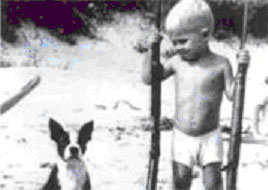I agreed to write a commentary on Dan Gordon’s March 10 post about specialization versus general education (which strikes me as cogent and wise), but I can’t get the image of Eve Marie Carson out of my head or the horror of her violent death out of my heart.
Eve Marie Carson was the 23-year old University of North Carolina senior and student body president shot and killed execution-style last weekend, apparently for her car and credit cards, by a sociopath with a handgun. Just days earlier, 18-year-old Lauren Burk, a first year student at Auburn University was gunned down and left to die by the side of the road. Her car was found in flames a short while later in a campus parking lot.
These are just the latest in an unrelenting string of school shootings. There were five school shootings in just a one-week period last month alone, culminating in the Valentine’s Day massacre at Northern Illinois University that left eight dead and 15 wounded. Since the Columbine High School shooting in April 1999, there have been more than 30 school shootings in the United States, claiming 88 lives and leaving 125 physically wounded. The psychological wounds are incalculable. One shooting, at Virginia Tech in April of last year, accounts for 33 of the fatalities.

A widely circulated photo of Charles Whitman, as a boy, holding two rifles. Whitman killed 14 people and wounded 31 others in a shooting rampage from the clock tower at the University of Texas Austin in August 1966.
School shootings make the headlines, however there are tens of thousands of firearm-related deaths every year (on average about 30,000 fatalities annually), most involving handguns, that do not make the headlines but are equally devastating for the victims, survivors, families, and communities.
What are we doing about this epidemic of gun violence? What is anybody doing? How can we tolerate this?
Meanwhile, the Congress holds hearings to determine what banned substance may have been injected into Roger Clemens’s ass. Why doesn’t the Congress hold hearings to determine what can be done to address the problem of gun violence in this country? Wouldn’t that be a better use of their time?
There has not been any meaningful gun control legislation passed in this country since 1994, when the Brady Handgun Violence Prevention Act (imposing a five-day waiting period and background checks) and the so-called Assault Weapons Ban were passed. Before that, you have to go all the way back to the 1968 Gun Control Act (banning mail order sales of rifles and shotguns). The former never would have been passed except for the attempted assassination of Ronald Regan and the ceaseless efforts of his wounded Press Secretary James Brady and his wife Sarah. The latter act followed upon the assassinations of John F. Kennedy (with a mail order rifle), Martin Luther King, and Robert Kennedy.
When I mention this to friends, they always say the same things. The Second Amendment is sacrosanct. The National Rifle Association is too powerful. Besides, there is nothing anyone can do. There are 192 million firearms in civilian hands in the United States, including 65 million handguns. The genie is out of the bottle.
I disagree.
The Second Amendment may be sacrosanct, but its meaning and implications are notoriously unclear. The fact is no gun control law has ever been overturned by the U.S. Supreme Court on Second Amendment grounds. That includes local community bans on the sale and possession of handguns. (Ominously, this could change this year with the anxiously awaited decision in Parker vs. the District of Columbia.)
The gun lobby is very powerful. But so too are the combined forces of those who want stricter gun control. Sixty percent of Americans support stricter gun control, according to the Pew Research Center. Law enforcement, medical professionals, educators, and big city mayors are powerful advocates for gun control. The gun lobby can be beaten back. Gun control needs to be made a national priority.
According to the Department of Justice, deaths by firearms fell steadily from 38,317 to 29,573 in the decade from 1991 to 2001, a decrease of nearly 25%. The reasons for this decline are undoubtedly various and difficult to isolate and quantify, however, a thorough and sustained analysis of them could lead to the development of strategies for reducing gun violence even further. But we sit on our hands and treat these horrific acts like natural disasters instead of the social dysfunctions they are.
Shame on us.
–David Tebaldi, Executive Director, Massachusetts Foundation for the Humanities


